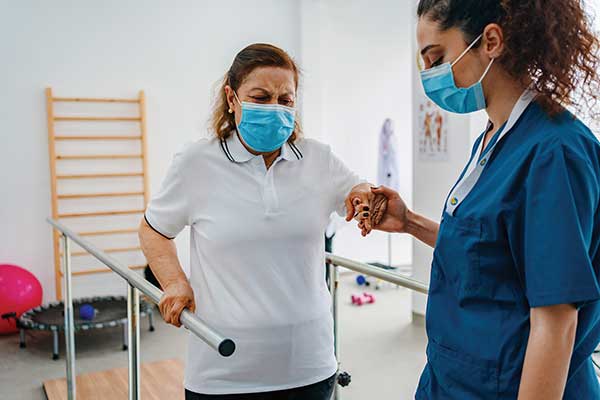(Family Features) In the weeks and months immediately following a stroke, an early rehabilitation program offers the best possible recovery outcomes. While each patient’s journey may be different, starting the path toward rehabilitation as soon as it’s medically safe allows stroke survivors to mitigate the lasting effects.
According to the American Stroke Association, a division of the American Heart Association, each year, approximately 800,000 people in the United States have a stroke. About 4 in 5 people who suffer a stroke will survive, but the majority have some degree of physical impairment or disability.
Early Intervention
The first three months after a stroke are especially critical. Although recovery may continue for years after a stroke, this golden time in the immediate aftermath of a stroke is when the brain is most able to adjust to the damage done by the stroke so the survivor can learn new ways to do things.
“There is a critical period of neuroplasticity, which is the brain’s ability to create new connections where there has been damage from a stroke,” said Elissa Charbonneau, M.S., D.O., chief medical officer of Encompass Health and an American Stroke Association volunteer. “The early period after a stroke is crucial for helping the brain to establish those connections again.”
Customized Rehabilitation
 Once a stroke survivor’s medical condition is stabilized and he or she is ready to leave the hospital, post-stroke rehabilitation can help restore function and teach new ways to complete everyday tasks. Rehabilitation may take place in an inpatient facility, skilled nursing facility, long-term acute care facility or nursing home. Outpatient clinics and home health agencies can also provide rehabilitative care in certain circumstances.
Once a stroke survivor’s medical condition is stabilized and he or she is ready to leave the hospital, post-stroke rehabilitation can help restore function and teach new ways to complete everyday tasks. Rehabilitation may take place in an inpatient facility, skilled nursing facility, long-term acute care facility or nursing home. Outpatient clinics and home health agencies can also provide rehabilitative care in certain circumstances.
One patient’s rehab journey might include therapy to improve balance, strength or mobility, while another might need speech or other therapies. A rehabilitation designed for the individual is critical.
Support for Your Journey
Following a stroke, your medical team will likely help connect you with a local rehabilitation center where you can find experts to guide your rehabilitation and recovery. Other resources, including the American Stroke Association, provide resources for stroke rehab and recovery including step-by-step videos for stroke survivors and caregivers.
These tools help answer your questions, explain what to expect and address practical concerns like how to approach daily living tasks such as grocery shopping, doing laundry and meal preparation.
Preventing a Recurrence
After a first stroke, 1 in 4 survivors will have another. Although some risk factors, like age, gender and family history, are beyond control, survivors have the power to reduce that risk by working with a doctor.
Simple habits like eating healthfully, moving more and taking medications as prescribed can help your brain and reduce your risk of a repeat stroke. Controlling conditions like high blood pressure, diabetes and sleep apnea also reduce your risk of having another stroke.
Find additional recovery tips, including advice from stroke survivors, caregivers and health care professionals, at stroke.org/recoverytips .
Photos courtesy of Getty Images







